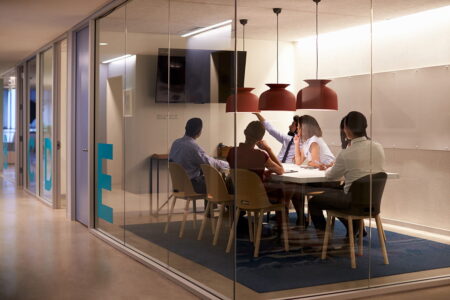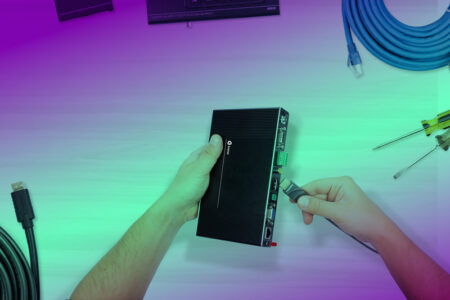The big news this year (apparently) is the growing number of consumer televisions that support HDMI 2.1. One year ago, only Japanese chip manufacturer Socionext could supply chipsets in this format. Now, with much certification work accomplished, other chip fabbers are getting onboard, and TV brands including Samsung, LG, TCL, Hisense, Sony, Panasonic, and Sharp are shipping 4K and 8K TV models with more than one v2.1 input.
The 8K TV market, while still very slow to get going due to high retail prices and lack of consumer enthusiasm, will have to rely on V2.1 interfaces entirely. An 8K video signal with 10-bit 4:2:0 high dynamic range color, refreshed at 60 Hz, has an uncompressed data rate of about 40 Gb/s! And high frame rates are all the rage with gamers these days, so kicking things up to 120 Hz doubles the data rate. For RGB connections, the rate doubles again over 4:2:0 video.
HDMI 2.1, unlike its predecessors, supports Display Stream Compression (DSC). But no one’s really using DSC for consumer applications, aside from small mobile electronics. DSC supports 2:1 video compression with very low latency – a handy tool to have, given the data rates you just saw – and is the foundation of the SDVoE Blue River NT system being hawked for AV-over-IT networks.
Other attributes of HDMI 2.1 include support for all static and dynamic high dynamic range formats (just another way of saying it can handle higher data rates and pass along the required CTA-861.x HDR metadata), an Enhanced Audio Return Channel (eARC) that can handle 1500 Kb/s, sufficient for Dolby Atmos spatial sound; and some additional alphabet soup acronyms:
A quick glance at those data rates for 8K (and120 Hz 4K with RGB 10-bit and 2-bit color) has many of us thinking that optical cables would make a lot more sense for HDMI 2.1 interconnections. Indeed; the HDMI Forum recently certified the first Active Optical Cable (AOC) for long-length installations and also started promotion of HDMI Cable Power so AOCs can be powered directly from a source device’s HDMI Connector. Presumably, that means kicking up the DC power handling capability of HDMI along the way, similar to what DisplayPort did 15 years ago.
According to the HDMI Forum, we can expect greater numbers of TVs, AV receivers, game consoles (like the hard-to-find PlayStation 5), graphics cards for gaming, PCs and laptops, and set-top boxes to be introduced this year with one or more v2.1 interfaces.
Accordingly, a new certification program for Ultra High-Speed HDMI cables has been launched. Cables that carry this certification must be tested only at HDMI Forum Authorized Test Centers (with every available cable length tested), registered with the HDMI Licensing Authority (HDMI LA) verification and authentication program, and packaged with an Ultra High-Speed HDMI Certification label that contains a hologram, QR code, and label ID number.
We mention all this because as our industry well knows, the consumer electronics marketplace “wags the dog” nowadays. To date, there is very little support for HDMI 2.1 in the Pro AV business, but that will change pretty quickly. Consider that the vast majority of large displays (televisions and monitors) sold into our market have Ultra HD native resolution (3840×2160 pixels) and there will be clients buying them who will also need HDR imaging, deep color, and ultimately high frame rates, particularly in tiled displays.
It remains to be seen what impact all of this will have on DisplayPort, which announced at last year’s CES that they were developing standards for version 2.0. HDMI has become so ubiquitous that you’ll find it on DSLR cameras and pro video gear, leaving DP to the world of computer graphics cards and laptops.
What I found interesting is that there’s no support yet for USB 3.0 Type-C Alternate Mode, which DisplayPort embraced early on. Glen couldn’t give us any specific reason why not – such a mode would obviate the need for micro and mini HDMI connections, particularly on mobile electronics. Perhaps we’ll see some movement in that direction this year. Stay tuned…










